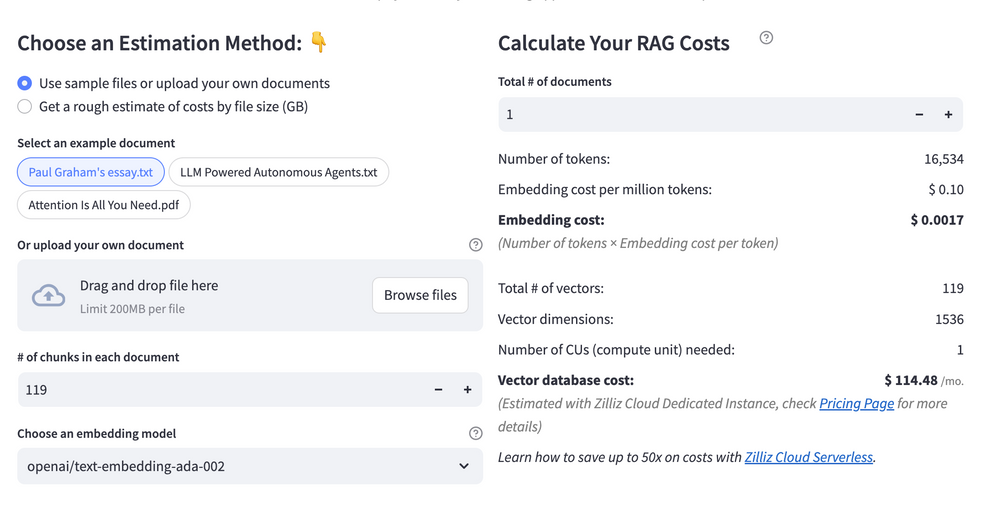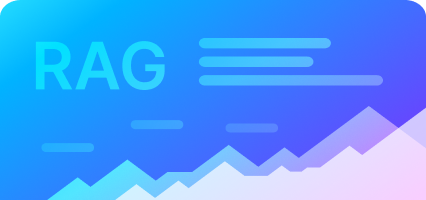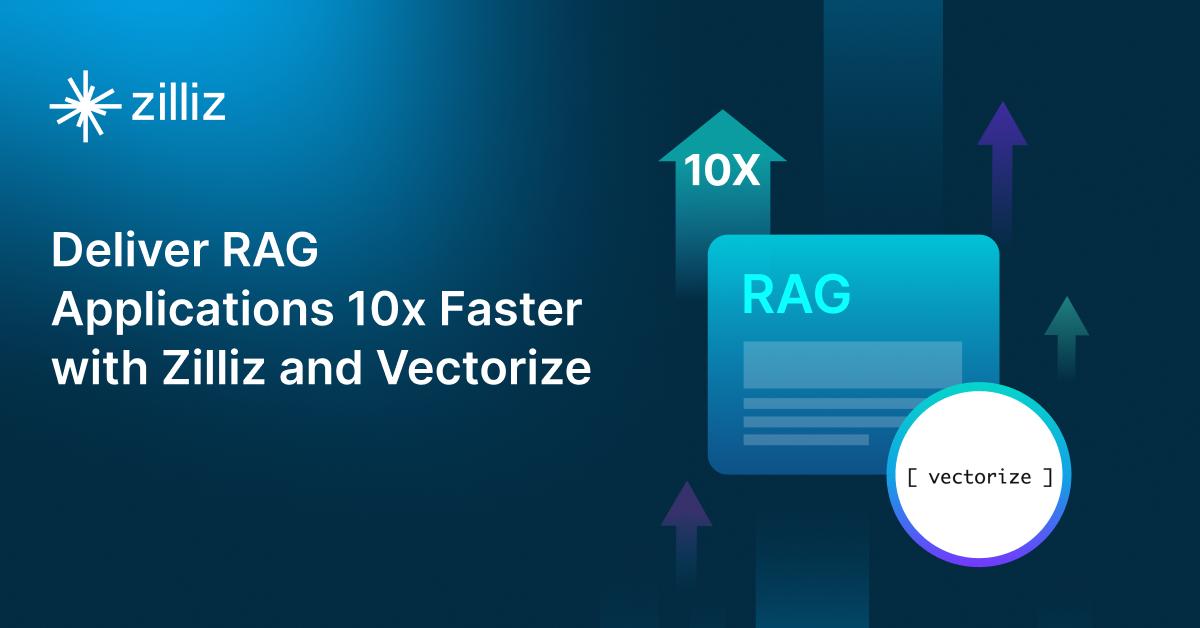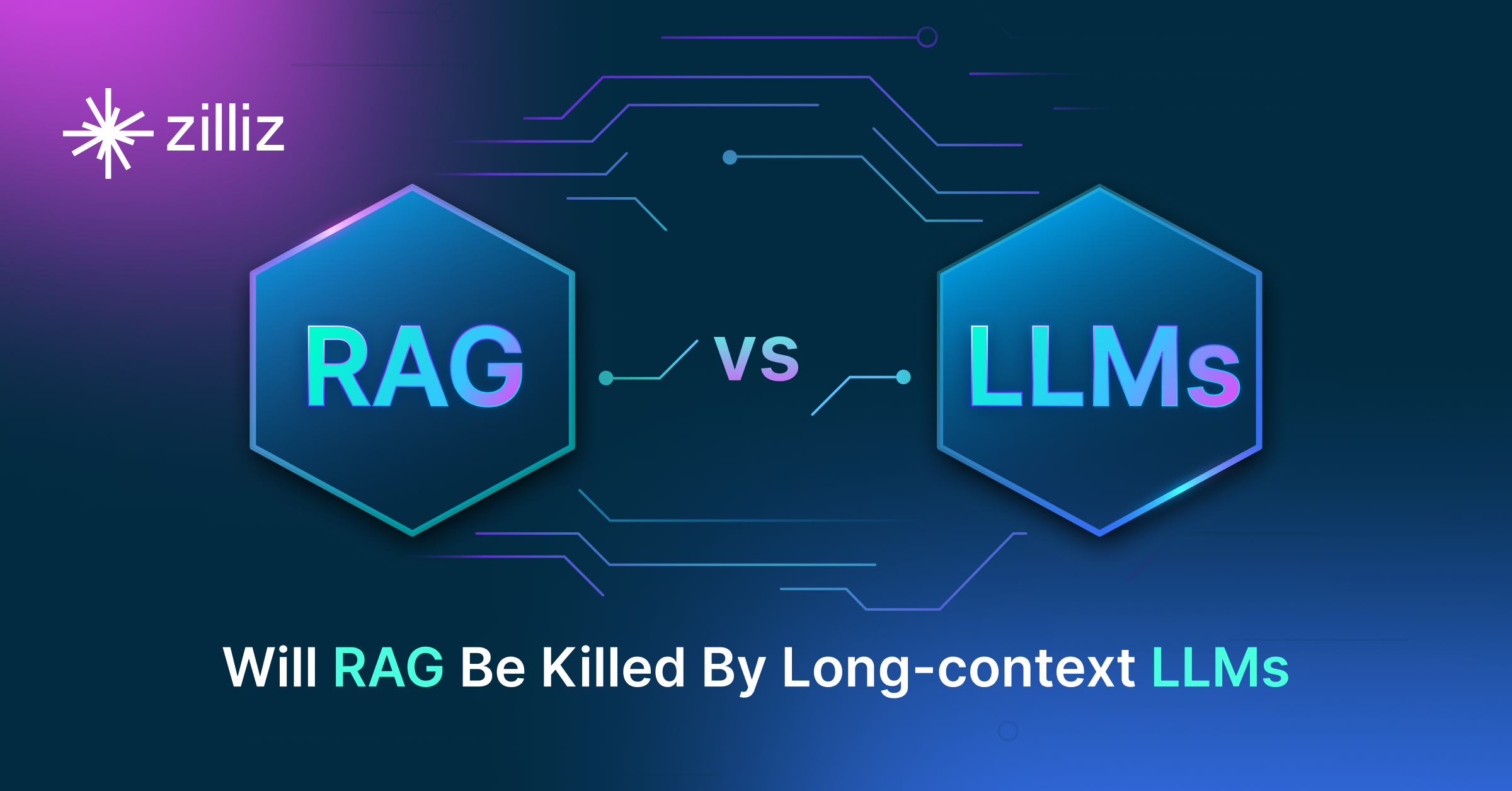Build RAG Chatbot with LangChain, Milvus, OpenAI GPT-4, and Ollama all-minilm
Introduction to RAG
Retrieval-Augmented Generation (RAG) is a game-changer for GenAI applications, especially in conversational AI. It combines the power of pre-trained large language models (LLMs) like OpenAI’s GPT with external knowledge sources stored in vector databases such as Milvus and Zilliz Cloud, allowing for more accurate, contextually relevant, and up-to-date response generation. A RAG pipeline usually consists of four basic components: a vector database, an embedding model, an LLM, and a framework.
Key Components We'll Use for This RAG Chatbot
This tutorial shows you how to build a simple RAG chatbot in Python using the following components:
- LangChain: An open-source framework that helps you orchestrate the interaction between LLMs, vector stores, embedding models, etc, making it easier to integrate a RAG pipeline.
- Milvus: An open-source vector database optimized to store, index, and search large-scale vector embeddings efficiently, perfect for use cases like RAG, semantic search, and recommender systems. If you hate to manage your own infrastructure, we recommend using Zilliz Cloud, which is a fully managed vector database service built on Milvus and offers a free tier supporting up to 1 million vectors.
- OpenAI GPT-4: GPT-4 is OpenAI's advanced language model, designed for comprehensive understanding and context-aware text generation. It excels in creative writing, complex problem-solving, and nuanced conversation, making it suitable for applications in content creation, tutoring, and interactive AI. Its robust capabilities enable it to handle a wide range of topics with depth and coherence.
- Ollama all-minilm: Ollama all-minilm is a lightweight transformer-based model designed for efficient natural language understanding and generation tasks. Boasting a compact architecture, it excels in scenarios where computational resources are limited, making it ideal for mobile applications and real-time chatbots while maintaining competitive performance in language tasks.
By the end of this tutorial, you’ll have a functional chatbot capable of answering questions based on a custom knowledge base.
Note: Since we may use proprietary models in our tutorials, make sure you have the required API key beforehand.
Step 1: Install and Set Up LangChain
%pip install --quiet --upgrade langchain-text-splitters langchain-community langgraph
Step 2: Install and Set Up OpenAI GPT-4
pip install -qU "langchain[openai]"
import getpass
import os
if not os.environ.get("OPENAI_API_KEY"):
os.environ["OPENAI_API_KEY"] = getpass.getpass("Enter API key for OpenAI: ")
from langchain.chat_models import init_chat_model
llm = init_chat_model("gpt-4", model_provider="openai")
Step 3: Install and Set Up Ollama all-minilm
pip install -qU langchain-ollama
from langchain_ollama import OllamaEmbeddings
embeddings = OllamaEmbeddings(model="all-minilm")
Step 4: Install and Set Up Milvus
pip install -qU langchain-milvus
from langchain_milvus import Milvus
vector_store = Milvus(embedding_function=embeddings)
Step 5: Build a RAG Chatbot
Now that you’ve set up all components, let’s start to build a simple chatbot. We’ll use the Milvus introduction doc as a private knowledge base. You can replace it with your own dataset to customize your RAG chatbot.
import bs4
from langchain import hub
from langchain_community.document_loaders import WebBaseLoader
from langchain_core.documents import Document
from langchain_text_splitters import RecursiveCharacterTextSplitter
from langgraph.graph import START, StateGraph
from typing_extensions import List, TypedDict
# Load and chunk contents of the blog
loader = WebBaseLoader(
web_paths=("https://milvus.io/docs/overview.md",),
bs_kwargs=dict(
parse_only=bs4.SoupStrainer(
class_=("doc-style doc-post-content")
)
),
)
docs = loader.load()
text_splitter = RecursiveCharacterTextSplitter(chunk_size=1000, chunk_overlap=200)
all_splits = text_splitter.split_documents(docs)
# Index chunks
_ = vector_store.add_documents(documents=all_splits)
# Define prompt for question-answering
prompt = hub.pull("rlm/rag-prompt")
# Define state for application
class State(TypedDict):
question: str
context: List[Document]
answer: str
# Define application steps
def retrieve(state: State):
retrieved_docs = vector_store.similarity_search(state["question"])
return {"context": retrieved_docs}
def generate(state: State):
docs_content = "\n\n".join(doc.page_content for doc in state["context"])
messages = prompt.invoke({"question": state["question"], "context": docs_content})
response = llm.invoke(messages)
return {"answer": response.content}
# Compile application and test
graph_builder = StateGraph(State).add_sequence([retrieve, generate])
graph_builder.add_edge(START, "retrieve")
graph = graph_builder.compile()
Test the Chatbot
Yeah! You've built your own chatbot. Let's ask the chatbot a question.
response = graph.invoke({"question": "What data types does Milvus support?"})
print(response["answer"])
Example Output
Milvus supports various data types including sparse vectors, binary vectors, JSON, and arrays. Additionally, it handles common numerical and character types, making it versatile for different data modeling needs. This allows users to manage unstructured or multi-modal data efficiently.
Optimization Tips
As you build your RAG system, optimization is key to ensuring peak performance and efficiency. While setting up the components is an essential first step, fine-tuning each one will help you create a solution that works even better and scales seamlessly. In this section, we’ll share some practical tips for optimizing all these components, giving you the edge to build smarter, faster, and more responsive RAG applications.
LangChain optimization tips
To optimize LangChain, focus on minimizing redundant operations in your workflow by structuring your chains and agents efficiently. Use caching to avoid repeated computations, speeding up your system, and experiment with modular design to ensure that components like models or databases can be easily swapped out. This will provide both flexibility and efficiency, allowing you to quickly scale your system without unnecessary delays or complications.
Milvus optimization tips
Milvus serves as a highly efficient vector database, critical for retrieval tasks in a RAG system. To optimize its performance, ensure that indexes are properly built to balance speed and accuracy; consider utilizing HNSW (Hierarchical Navigable Small World) for efficient nearest neighbor search where response time is crucial. Partitioning data based on usage patterns can enhance query performance and reduce load times, enabling better scalability. Regularly monitor and adjust cache settings based on query frequency to avoid latency during data retrieval. Employ batch processing for vector insertions, which can minimize database lock contention and enhance overall throughput. Additionally, fine-tune the model parameters by experimenting with the dimensionality of the vectors; higher dimensions can improve retrieval accuracy but may increase search time, necessitating a balance tailored to your specific use case and hardware infrastructure.
OpenAI GPT-4 optimization tips
GPT-4 is a powerful model for RAG applications, but optimizing retrieval and prompt efficiency is key to reducing costs and improving response quality. Use embedding-based retrieval to ensure highly relevant context is included while avoiding unnecessary token usage. Structure prompts concisely, presenting retrieved documents in a clear, ranked format to guide the model’s focus. Fine-tune temperature (0.1–0.3) for fact-based tasks and adjust top-p and top-k sampling to control response variability. Implement caching for frequently queried information to reduce redundant API calls and improve latency. If using GPT-4 in high-traffic applications, batch requests to minimize overhead and optimize throughput. Leverage OpenAI’s function-calling capabilities to structure responses programmatically and avoid excessive hallucinations. Use response streaming for real-time applications to improve perceived performance while maintaining efficient token usage.
Ollama all-minilm optimization tips
To optimize the Ollama all-minilm model in a Retrieval-Augmented Generation (RAG) setup, consider fine-tuning the model on domain-specific data to enhance its relevance and accuracy. Use efficient indexing techniques like FAISS for faster retrieval of embeddings from large datasets, ensuring smooth interaction between retrieval and generation phases. Adjust the temperature and top-k sampling parameters during generation to balance creativity and coherence based on your application needs. Monitor GPU utilization and adjust batch sizes to optimize throughput while maintaining responsiveness. Lastly, regularly evaluate and update the retrieval corpus to ensure the model generates the most pertinent information, improving overall performance.
By implementing these tips across your components, you'll be able to enhance the performance and functionality of your RAG system, ensuring it’s optimized for both speed and accuracy. Keep testing, iterating, and refining your setup to stay ahead in the ever-evolving world of AI development.
RAG Cost Calculator: A Free Tool to Calculate Your Cost in Seconds
Estimating the cost of a Retrieval-Augmented Generation (RAG) pipeline involves analyzing expenses across vector storage, compute resources, and API usage. Key cost drivers include vector database queries, embedding generation, and LLM inference.
RAG Cost Calculator is a free tool that quickly estimates the cost of building a RAG pipeline, including chunking, embedding, vector storage/search, and LLM generation. It also helps you identify cost-saving opportunities and achieve up to 10x cost reduction on vector databases with the serverless option.
 Calculate your RAG cost
Calculate your RAG cost
What Have You Learned?
By diving into this tutorial, you’ve unlocked the magic of building a RAG (Retrieval-Augmented Generation) system from the ground up! You learned how to seamlessly integrate LangChain—the flexible framework that orchestrates your pipeline—with Milvus, the blazing-fast vector database that stores and retrieves embeddings like a pro. Together with Ollama’s all-minilm embedding model, which converts text into meaningful numerical representations, and OpenAI’s GPT-4, the powerhouse LLM that generates human-like responses, you’ve seen how these tools form a cohesive workflow. The tutorial walked you through connecting each piece: ingesting data, creating embeddings, storing them in Milvus, and then using LangChain to query the database and pass context to GPT-4 for intelligent, context-aware answers. You even explored optimization tricks like tuning chunk sizes for embeddings and adjusting similarity search parameters to balance speed and accuracy. Plus, the free RAG cost calculator gave you a practical way to estimate expenses and scale your projects wisely—so you can build smarter without breaking the bank!
Now that you’ve seen the full picture, imagine the possibilities! You’ve got the blueprint to create RAG systems that can power chatbots, research assistants, or custom knowledge bases tailored to your needs. Whether you’re refining retrieval strategies, experimenting with different embedding models, or integrating domain-specific data, the tools are in your hands. Remember: every tweak and optimization you make unlocks new levels of performance and creativity. So go ahead—start building, iterate fearlessly, and let your projects shine. The future of AI-driven applications is waiting for your touch. Ready, set, RAG! 🚀
Further Resources
🌟 In addition to this RAG tutorial, unleash your full potential with these incredible resources to level up your RAG skills.
- How to Build a Multimodal RAG | Documentation
- How to Enhance the Performance of Your RAG Pipeline
- Graph RAG with Milvus | Documentation
- How to Evaluate RAG Applications - Zilliz Learn
- Generative AI Resource Hub | Zilliz
We'd Love to Hear What You Think!
We’d love to hear your thoughts! 🌟 Leave your questions or comments below or join our vibrant Milvus Discord community to share your experiences, ask questions, or connect with thousands of AI enthusiasts. Your journey matters to us!
If you like this tutorial, show your support by giving our Milvus GitHub repo a star ⭐—it means the world to us and inspires us to keep creating! 💖
- Introduction to RAG
- Key Components We'll Use for This RAG Chatbot
- Step 1: Install and Set Up LangChain
- Step 2: Install and Set Up OpenAI GPT-4
- Step 3: Install and Set Up Ollama all-minilm
- Step 4: Install and Set Up Milvus
- Step 5: Build a RAG Chatbot
- Optimization Tips
- RAG Cost Calculator: A Free Tool to Calculate Your Cost in Seconds
- What Have You Learned?
- Further Resources
- We'd Love to Hear What You Think!
Content
Vector Database at Scale
Zilliz Cloud is a fully-managed vector database built for scale, perfect for your RAG apps.
Try Zilliz Cloud for Free


